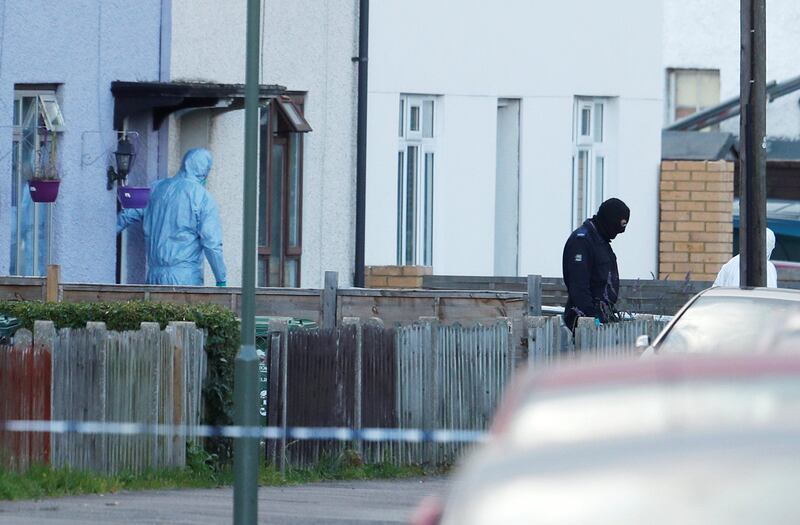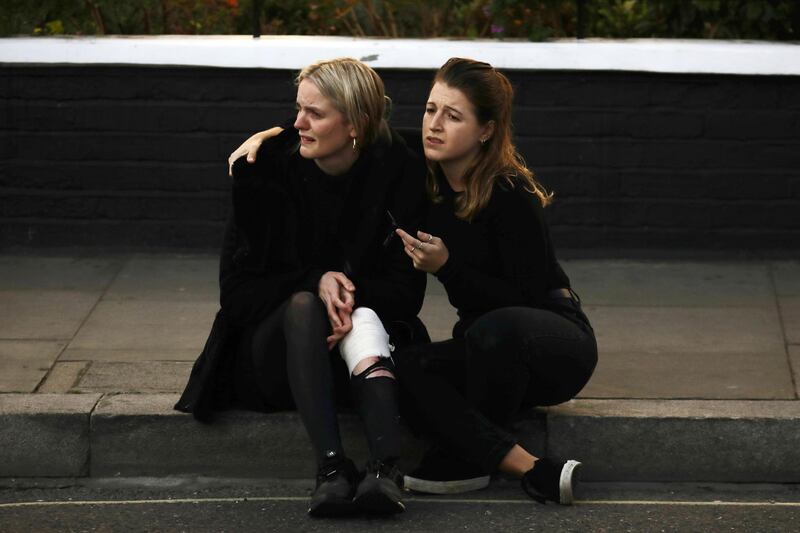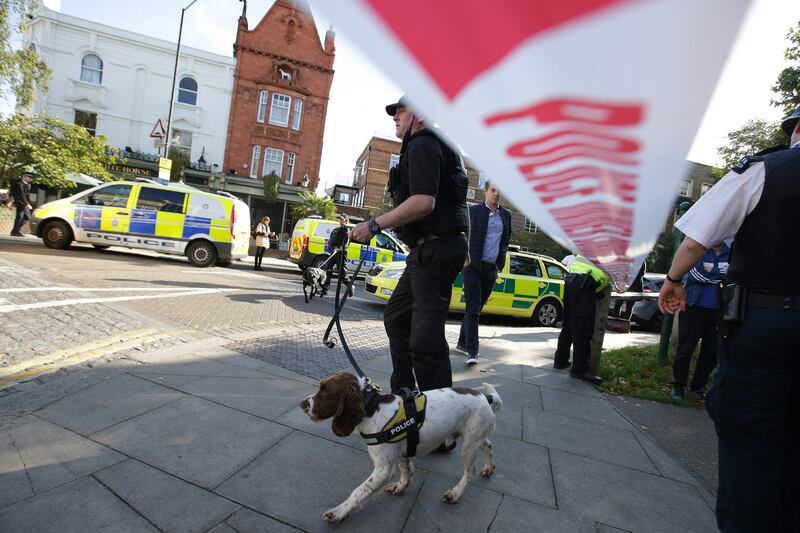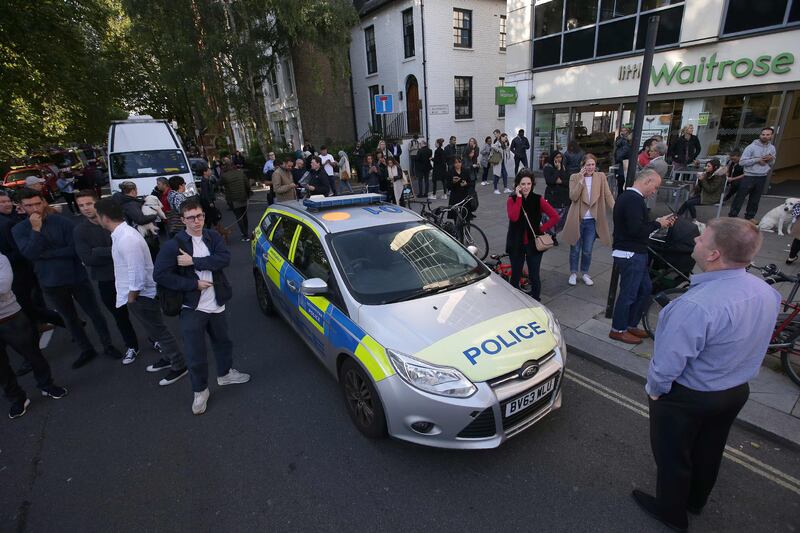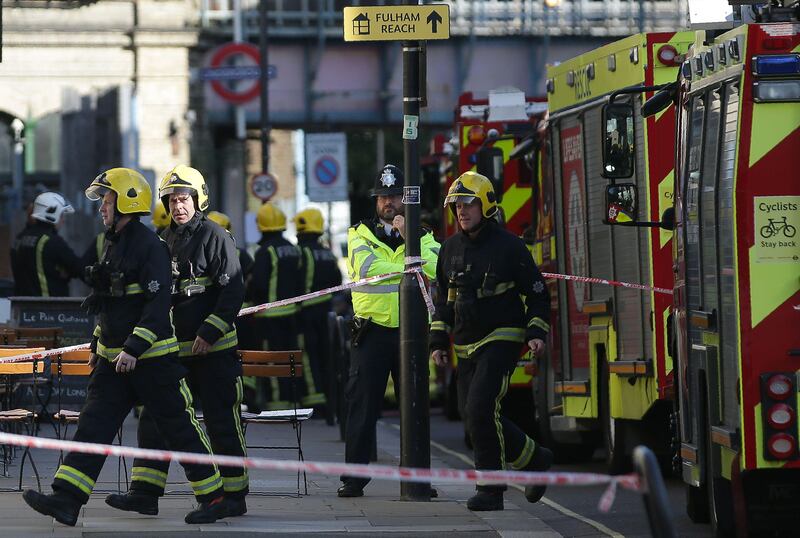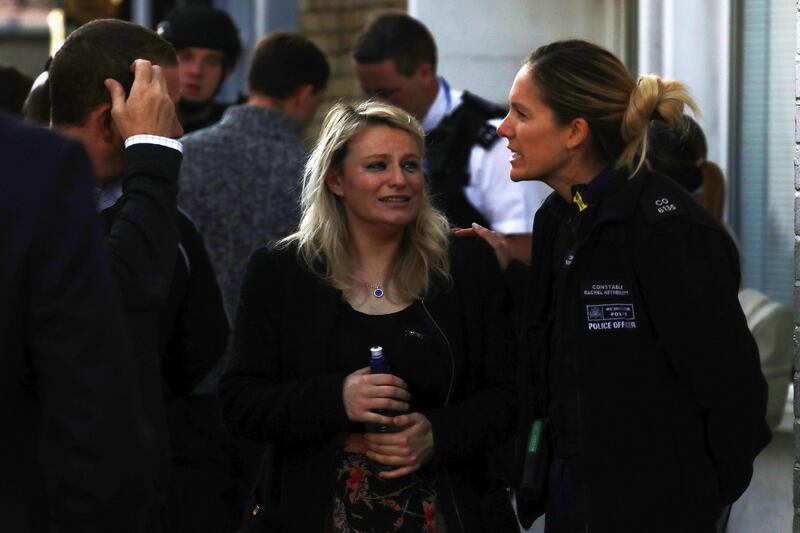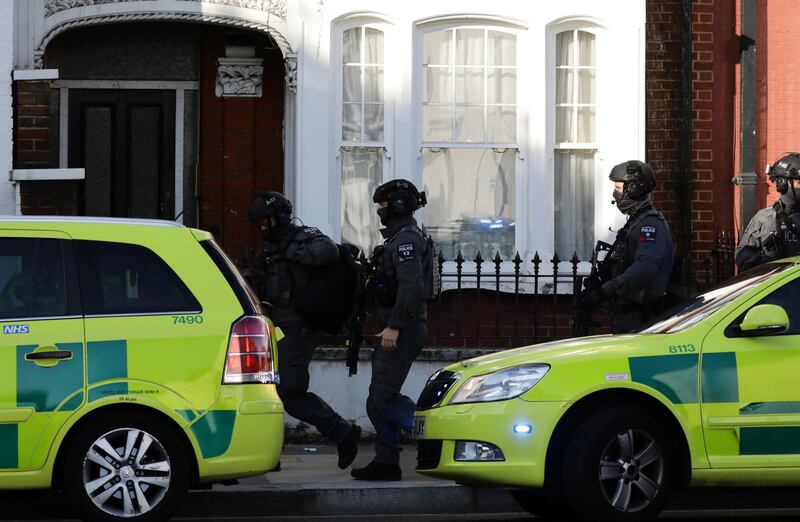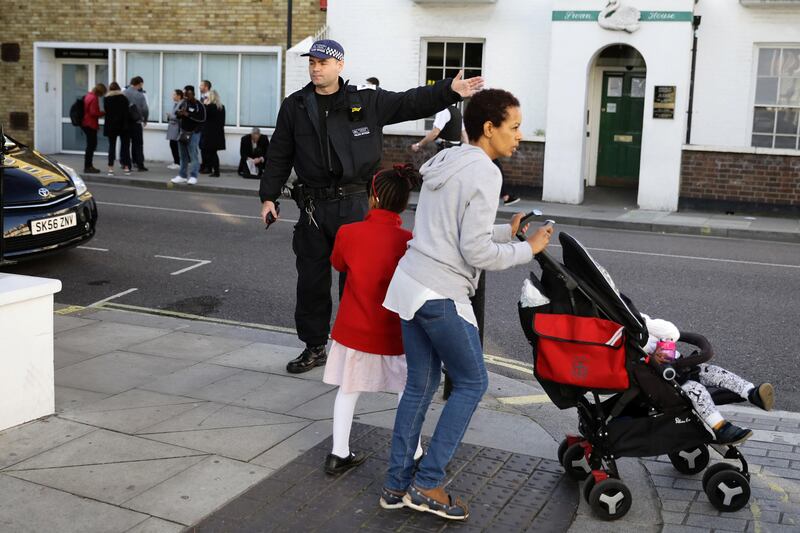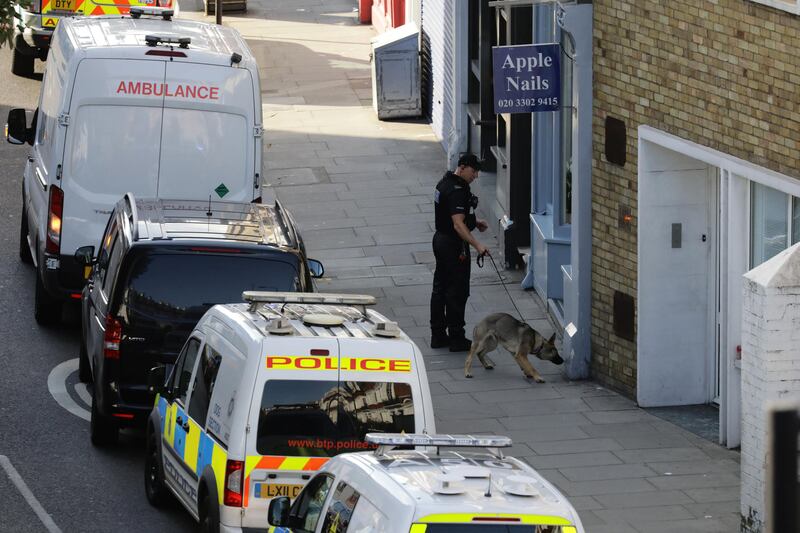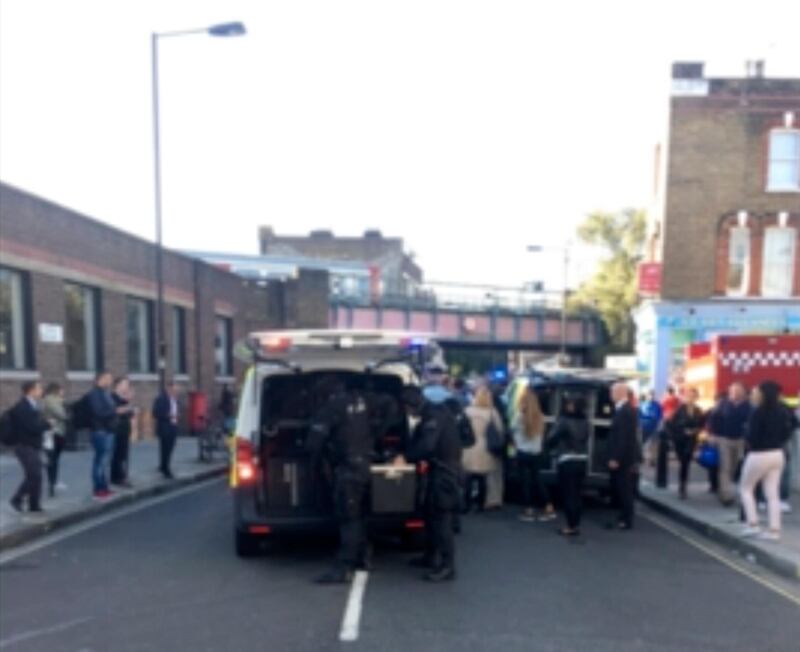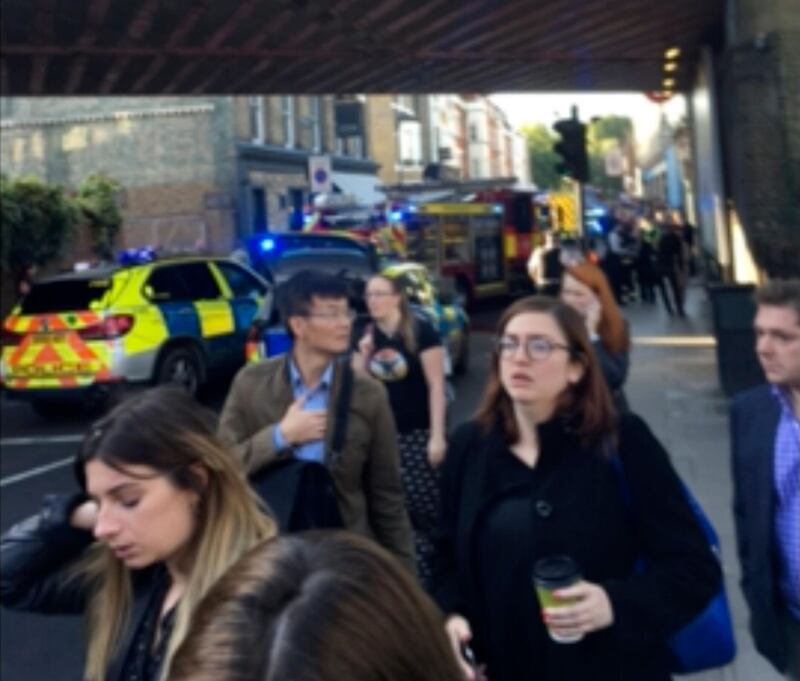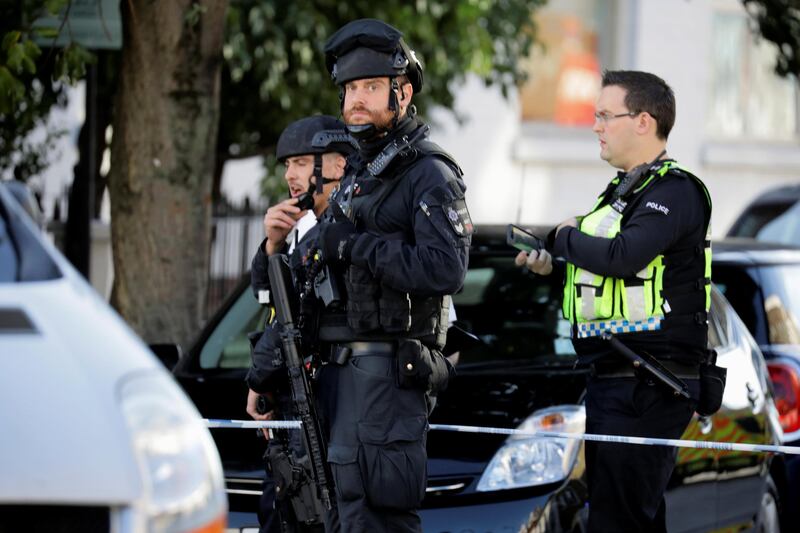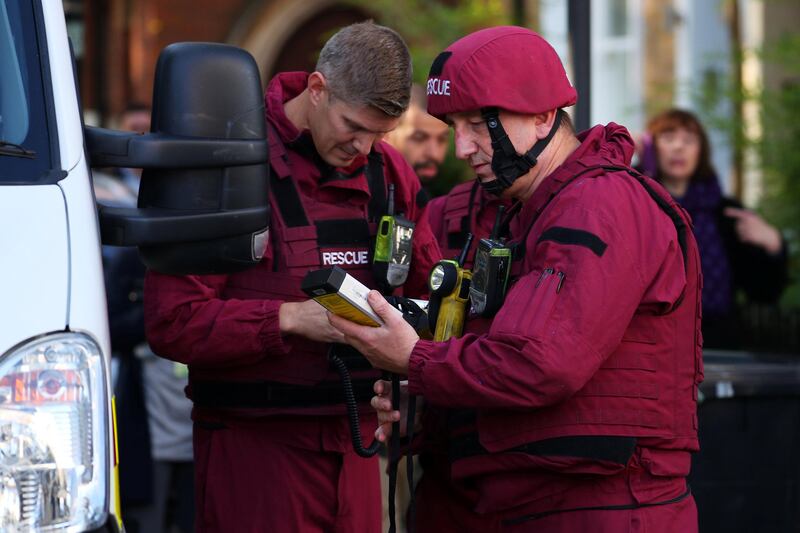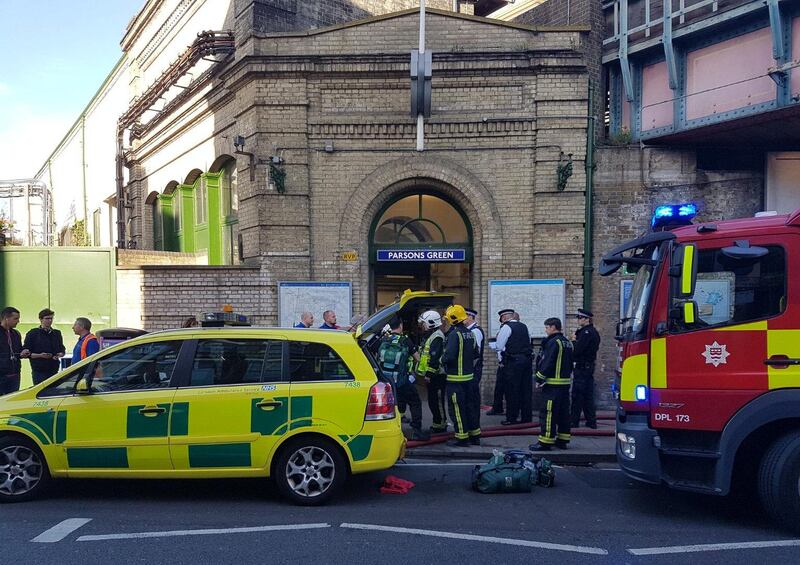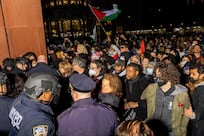British police detained a teenager in the southern coastal town of Dover on Saturday and searched a home 100 miles away as investigators made “significant” progress in identifying the people behind the failed London metro bomb attack that left 30 people injured.
The 18-year-old man was arrested at 7.50am in the port area of the town, a key departure point for ferries travelling to the northern French coast. Some six hours later, police backed by armed officers cleared people from a street in Sunbury-on-Thames, a commuter town five miles from London’s Heathrow Airport.
It is believed the property that was raided belongs to an elderly couple, who have been honoured for fostering child refugees.
Officers said the home was linked to the arrest of the 18-year-old. The street was evacuated as a precaution with pictures on social media showing counter-terrorist firearms officers carrying shields close to the property and sending up a cordon some 100 metres away. Nobody was arrested, said London’s Metropolitan Police in a statement.
Police declined to give details about the teenager’s identity, including his nationality, citing “strong investigative reasons”, potentially to avoid tipping off suspected accomplices. He was being moved to London for further questioning.
“This arrest will lead to more activity from our officers,” said Neil Basu, senior national coordinator for counter-terrorism policing. “The public should remain vigilant as our staff, officers and partners continue to work through this complex investigation.”
The threat level upgraded on Friday to critical - suggesting that an attack was imminent - remained in place despite the arrest suggesting that there were other potential suspects at large. The country's top counter-terrorism officer indicated on Friday that a potential network of plotters could have been involved. Assistant Commissioner Mark Rowley said police were “chasing down suspects”.
Hundreds of officers had been poring over security camera footage secured from the metro train attacked on Friday and the wider transport network to try to identify the person who left the bomb by the doors of the train. Members of the public sent in another 45 pictures and videos to investigators following a police appeal.
The fast-moving investigation resulted in the arrest on the Kent coast and then the search in Cavendish Road Sunbury-on-Thames, a quiet suburb where “nothing happens, it’s deathly quiet”, one resident told Sky News.
CTFO at our street in #sunbury pic.twitter.com/hTHLIkA0QJ
— kmil365 (@kmil365) September 16, 2017
Student Ivana Miladimov told the National that she was turned back by police as she tried to drive into Cavendish Road. She returned to her home in a nearby street but was told to evacuate 30 minutes later, she said. “We’re sitting in a coffee shop waiting to go back.”
Another resident was told she had a minute to pack her bags, grab her children and leave her home as police evacuated the area.
“I only had to open the door and saw police everywhere,” said Mojgan Jamali. “They told me to leave. They said: ‘You’ve one minute to get out of the house and get away. I just got out.”
Commuters reported a wall of flame after the device exploded on a train at 8.20am on Friday as it pulled into the west London station of Parsons Green. The device – which had wires and lights attached and was set to be detonated by a timer – failed to go off properly, effectively saving the lives of those on the packed carriage.
It was not clear if the bomb was meant to go off at the station. The metro train was heading towards the city on a route that would have taken it past Paddington train station – a major station and transport hub – and the upmarket west London suburbs of Kensington and Notting Hill.
Explosion on Parsons Green district line train. Fireball flew down carriage and we just jumped out open door. pic.twitter.com/pGbfotbfsJ
— Rigs (@el_rigs) September 15, 2017
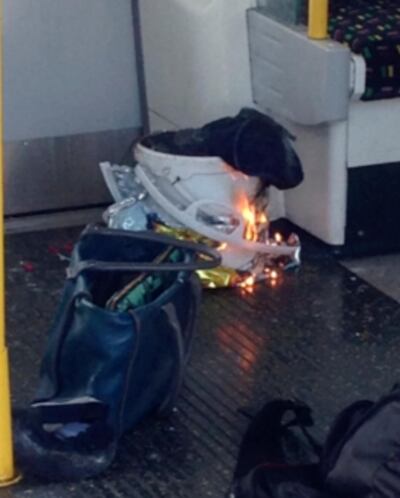
The device appeared to be similar to the bombs used in a failed lot to blow up the London transport system in July 21, 2005, two weeks after multiple blasts killed more than 50 people. The devices in that case were made with triacetone triperoxide (TATP).
Despite the failure to trigger a bigger explosion, witnesses reported seeing a fireball surging down the carriage that ripped off clothes and left commuters with flash burns. Others required treatment as they trampled while fleeing down a narrow stairway out of the subway station. Thirty people were treated in hospital with all but three released after treatment, according to health officials.
The interior minister, Amber Rudd, said that the authorities would investigate how the man was able to get the materials to make the device. Mrs Rudd – who chaired an emergency Cabinet meeting on Saturday - said that police had made “very significant” progress but added that it was too early to say if the man who was arrested had been known to police or the domestic security service MI5.
London underground train explosion aerials
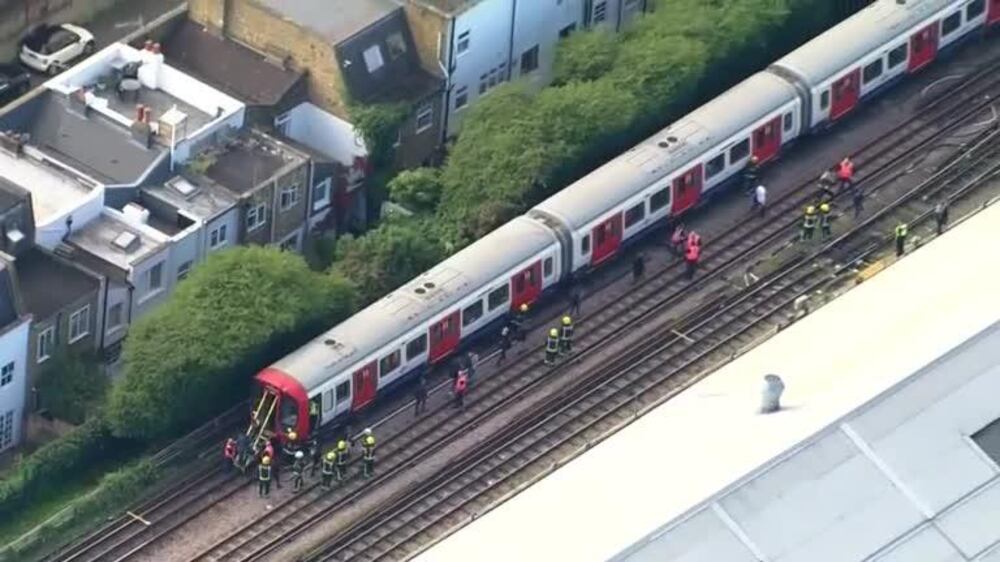
An August edition of Inspire magazine - the online al Qaeda publication – urged supporters to target trains, saying that such a planned attack could be hard to detect and the outcome could substantially damage a country’s transport sector, according to the Middle East Media Research Institute.
Last year, Damon Smith, a student with an interest in weapons and Islamic extremism left a rucksack filled with explosives and ball bearings on a London underground train. The device, built using a £2 clock and an al Qaeda article on bomb-making, failed to explode. He was jailed for 15 years in May.
The attack – the fifth major terrorist attack this year – led to a significantly increase security presence at stations on the capital’s transport network. Police said sporting events, including Saturday’s premier league matches, could expect to have more visible policing including armed officers. Troops were sent to key strategic sites around the country, freeing up armed officers to work on the major inquiry.
The threat level was last raised to critical in May following the bomb attack on a Manchester concert by pop star Ariana Grande that killed 22 people. It remained at that state for four days while police tried to work out if the suicide bomber, Salman Abedi, was working alone. Before that, it had not been triggered since 2007.
